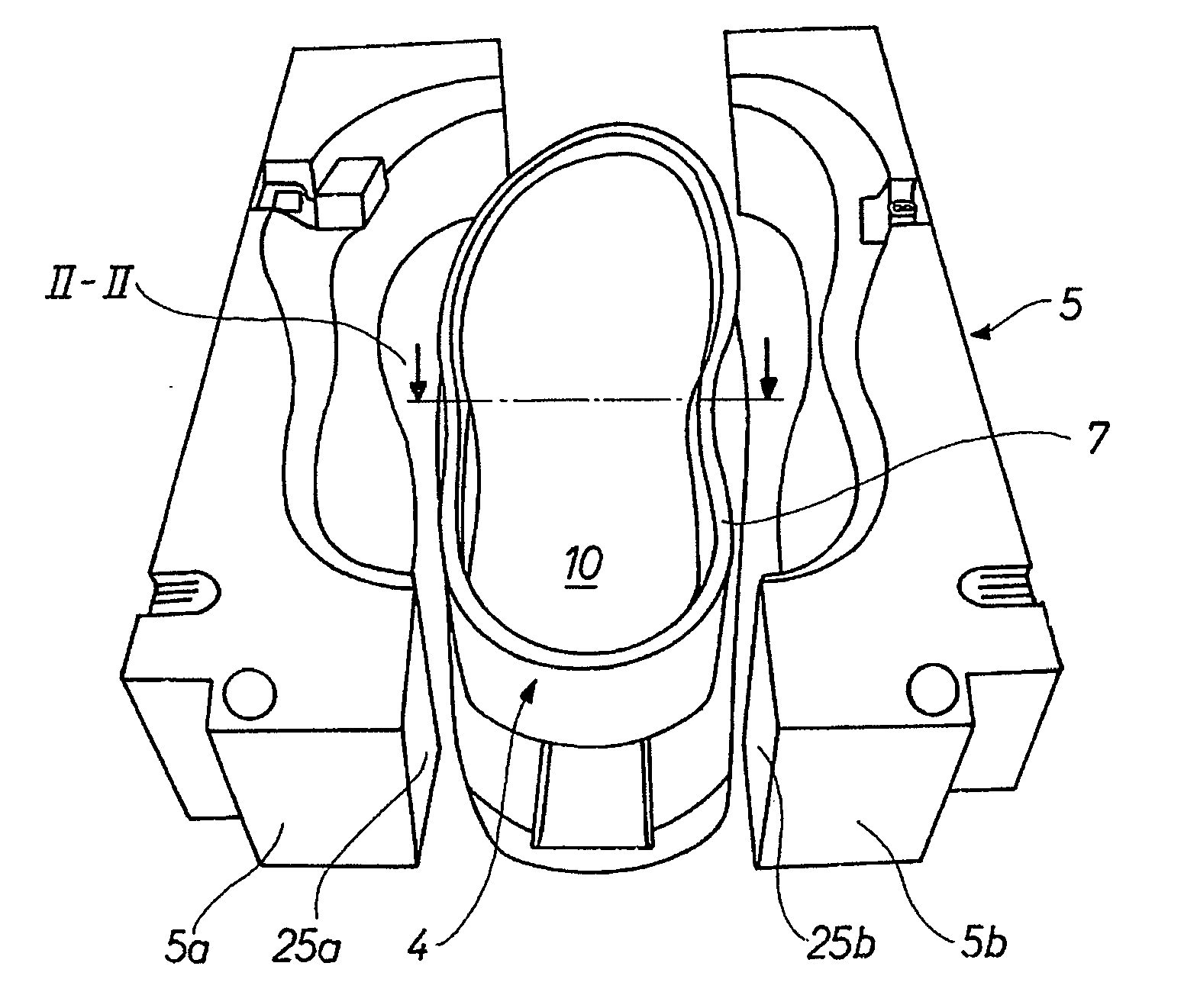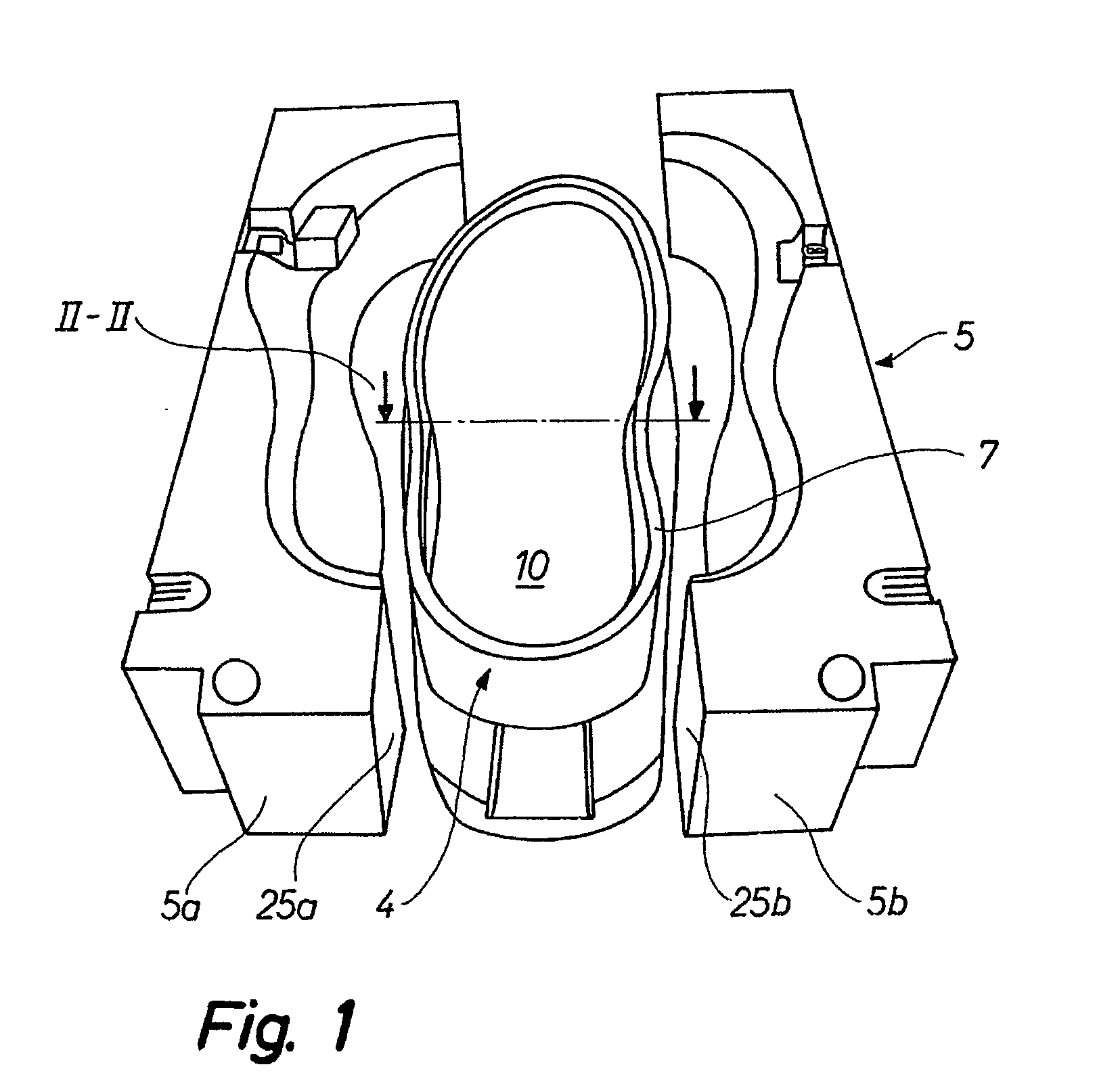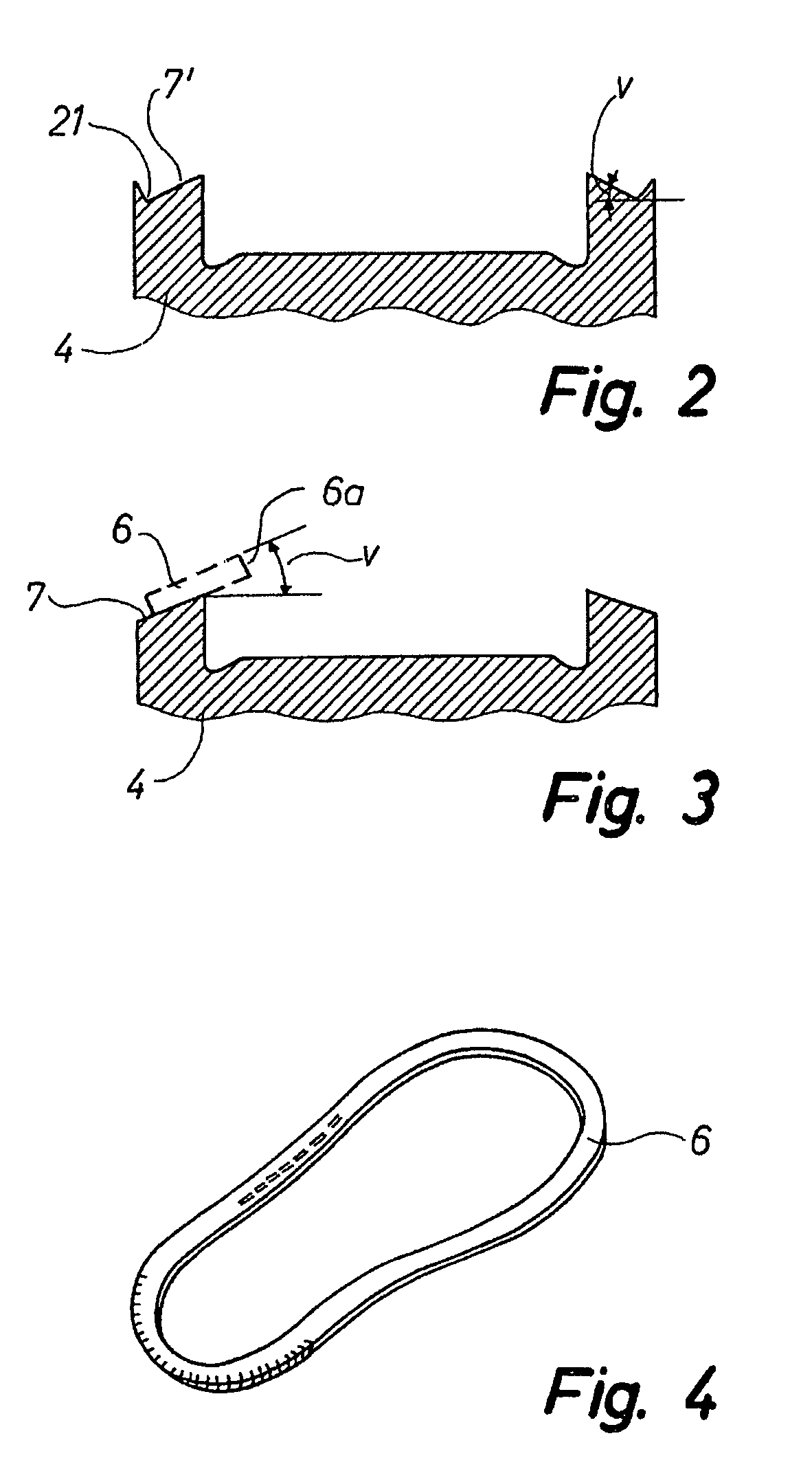Method of moulding soles on shoe uppers, a shoe welt and a mould for carrying out the method
- Summary
- Abstract
- Description
- Claims
- Application Information
AI Technical Summary
Benefits of technology
Problems solved by technology
Method used
Image
Examples
second embodiment
[0045]FIG. 9 is a sectional view of the welt according to the invention,
third embodiment
[0046]FIG. 10 is a sectional view of the welt according to the invention,
fourth embodiment
[0047]FIG. 11 is a sectional view of the welt according to the invention,
[0048]FIG. 12 shows a portion of the joint face of one of the upper mould halves, one branch of the Y-shaped supply conduit for the fluid sole moulding material being clearly visible, and
[0049]FIG. 13 shows a portion of the joint face of the other upper mould half, the other branch of the Y-shaped supply conduit being clearly visible.
BEST MODES FOR CARRYING OUT THE INVENTION
[0050]FIG. 1 illustrates a mould by means of which a method of moulding soles of a plastic material, eg. polyurethane, onto shoe uppers, may be carried out, a shoe upper 1 being arranged on a last 2, confer FIG. 5. As shown in FIG. 1 the mould 3 has a lower mould part 4 and an upper mould part 5 with two upper mould halves 5a, 5b. These upper mould halves may be moved to and fro each other in a horizontal plane. When the mould is used for the said method, the finished shoe will appear to have been actually welted. A welt 6 is used in the m...
PUM
| Property | Measurement | Unit |
|---|---|---|
| Length | aaaaa | aaaaa |
| Length | aaaaa | aaaaa |
| Fraction | aaaaa | aaaaa |
Abstract
Description
Claims
Application Information
 Login to View More
Login to View More - R&D
- Intellectual Property
- Life Sciences
- Materials
- Tech Scout
- Unparalleled Data Quality
- Higher Quality Content
- 60% Fewer Hallucinations
Browse by: Latest US Patents, China's latest patents, Technical Efficacy Thesaurus, Application Domain, Technology Topic, Popular Technical Reports.
© 2025 PatSnap. All rights reserved.Legal|Privacy policy|Modern Slavery Act Transparency Statement|Sitemap|About US| Contact US: help@patsnap.com



